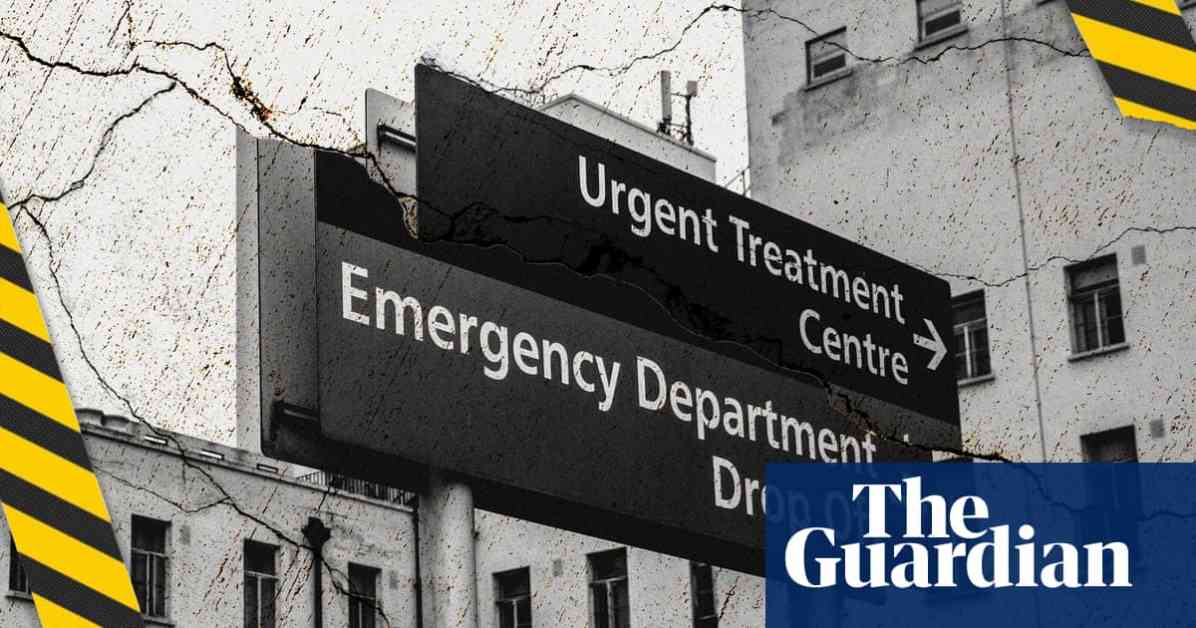England’s NHS Chiefs Issue Urgent Warning: Rundown Hospitals Pose ‘Outright Danger’
Hospital buildings across England are facing a dire situation, with internal NHS trust documents revealing the startling risks of fires, floods, and electrical faults due to their dilapidated state. Leaders within the healthcare system are sounding the alarm, stating that conditions have become “outright dangerous”, putting both staff and patients in harm’s way.
Decades of Neglect
Matthew Taylor, the chief executive of the NHS Confederation, highlighted the pressing issue, attributing the deteriorating state of hospital infrastructure to “decades of underinvestment” in the health service’s capital budget. This lack of funding has left the NHS in a precarious position, receiving significantly less financial support compared to other countries with similar healthcare systems.
A thorough analysis of hospital board papers conducted by The Guardian unveiled shocking details about the precarious state of various hospitals. Stepping Hill hospital in Stockport, for instance, is facing a rapid decline, with 13 critical areas classified as “at serious risk of imminent breakdown”. These include essential units such as the pathology unit, mortuary, cancer unit, chest clinic, datacentre, and electricity substation.
Major Safety Risks
Doncaster and Bassetlaw trust are also grappling with significant safety risks across the three hospitals under its administration. One of the most alarming concerns raised was the “increased risk to life and property in the event of fire” due to inadequate fire compartmentation, essential for preventing the spread of flames and smoke within a building.
Furthermore, issues such as outdated cold water storage tanks potentially harboring legionella bacteria, malfunctioning ventilation systems, and electrical infrastructure risks are prevalent in hospitals like Croydon and South Yorkshire trust. These deficiencies not only compromise the safety of patients and staff but also threaten the delivery of critical healthcare services.
Urgent Call for Action
The cost of addressing the deteriorating state of NHS facilities in England has skyrocketed to £13.8bn, with a staggering £2.7bn worth of essential works classified as high-risk for safety. This urgent situation necessitates an additional £6.4bn annually between 2025 and 2028 to maintain the healthcare estate’s functionality and enhance overall productivity.
In response to these critical challenges, Health Minister Andrew Gwynne emphasized the need for immediate action, condemning the previous government’s neglect and underinvestment that led to the current crisis. He underscored the government’s commitment to revitalizing the NHS through a substantial investment of £13.6bn in new buildings, equipment, and technology, marking the largest capital infusion in over 15 years.
As we navigate these pressing healthcare concerns, it is evident that swift and decisive measures are imperative to ensure the safety and well-being of all individuals relying on the NHS for essential medical care. The future of our healthcare system hinges on robust investments and strategic reforms to build a sustainable, resilient infrastructure capable of meeting the evolving needs of patients and healthcare providers alike.












